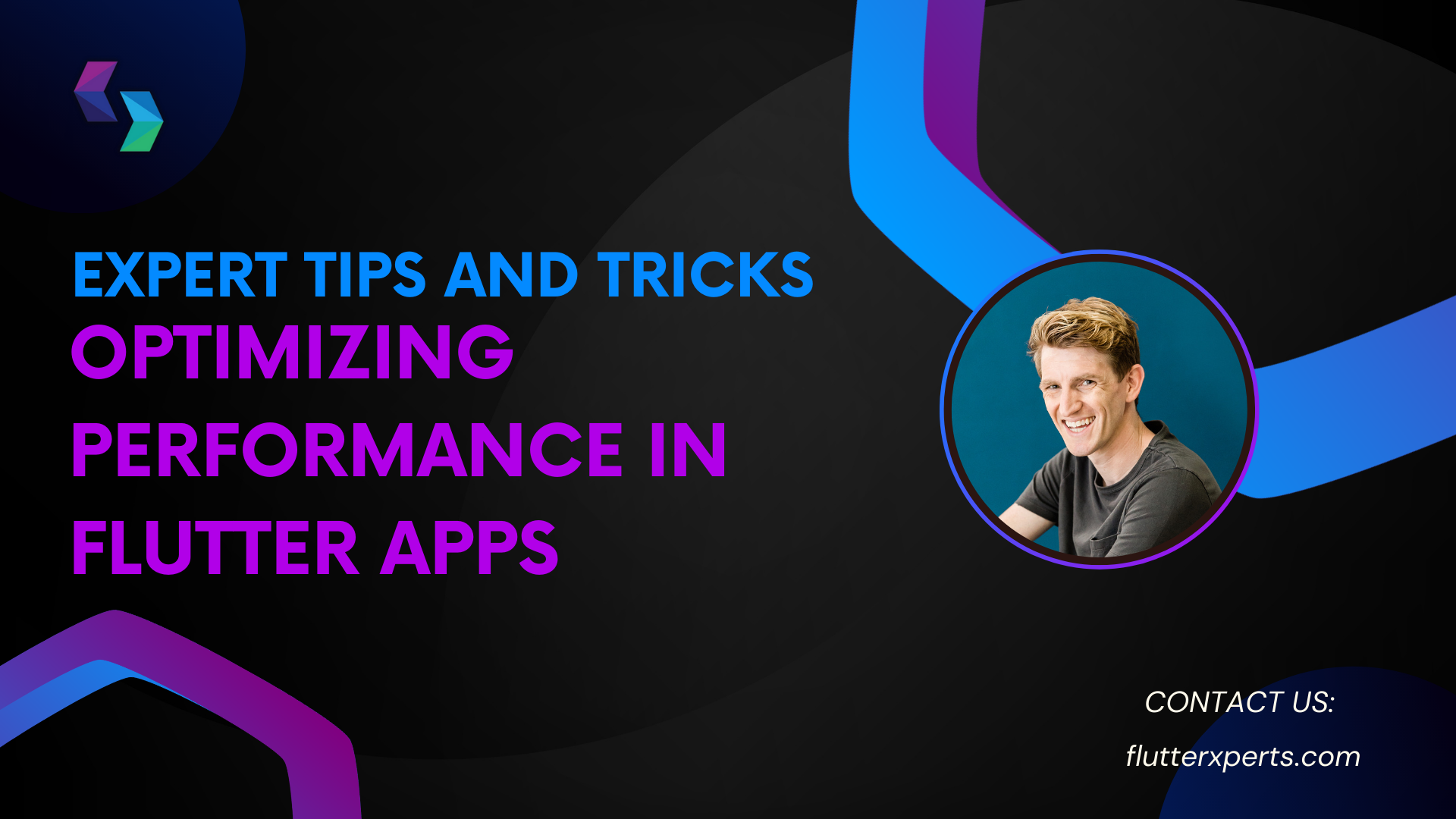Mastering Performance Optimization in Flutter Apps: Proven Strategies
Introduction
In today’s competitive mobile app landscape, performance optimization plays a critical role in ensuring a smooth and delightful user experience. Flutter, Google’s open-source UI toolkit for building natively compiled applications, empowers developers to create beautiful and high-performing apps across multiple platforms. However, even with Flutter’s inherent efficiency, it’s crucial to apply performance optimization techniques to deliver an exceptional user experience. In this article, we will explore proven strategies and best practices to master performance optimization in Flutter apps.
Understanding the Importance of Performance Optimization in Flutter Apps
Performance optimization is vital in mobile app development as it directly impacts user satisfaction and engagement. Users expect apps to be fast, responsive, and efficient, and any performance issues can lead to frustration and abandonment. By optimizing the performance of your Flutter app, you can:
- Provide a seamless and responsive user interface
- Reduce app load times and minimize latency
- Conserve device resources such as CPU and memory
- Enhance battery life on mobile devices
Now let’s dive into the various areas where you can analyze and improve the performance of your Flutter app.
Analyzing Performance Bottlenecks
Before optimizing your Flutter app, it’s essential to identify performance bottlenecks. These bottlenecks can be caused by inefficient code, slow rendering, excessive network requests, or excessive memory usage. By using profiling tools and analytics, you can pinpoint the areas that require optimization. Some helpful tools for performance analysis in Flutter include:
- Dart Observatory: A powerful profiling tool that provides insights into the runtime behavior of your app.
- Flutter Performance Monitor: A built-in tool that helps track rendering and frame rates, widget builds, and GPU usage.
- Flutter DevTools: An extensive suite of performance and debugging tools, including a timeline, memory, and CPU profiler.
By leveraging these tools, you can gain valuable insights into your app’s performance characteristics and identify areas for improvement.
Tips for Efficient Widget Management
Widgets are the building blocks of Flutter apps. Efficiently managing widgets is crucial for optimal performance. Here are some tips to consider:
1. Widget Reusability
Reuse widgets whenever possible to avoid unnecessary rebuilds. Flutter’s diffing algorithm efficiently updates the UI only when there are actual changes. By using the const keyword for stateless widgets and implementing shouldRebuild for stateful widgets, you can ensure that widgets are rebuilt only when necessary.
class MyWidget extends StatelessWidget {
const MyWidget({Key? key}) : super(key: key);
@override
Widget build(BuildContext context) {
return const Text('Hello, World!');
}
}
2. Stateless vs. Stateful Widgets
Prefer stateless widgets over stateful widgets whenever state management is not required. Stateless widgets are more performant as they don’t need to maintain internal state.
3. ListView.builder
When working with lists, use ListView.builder instead of ListView to build items lazily as they become visible. This approach avoids rendering all items at once, resulting in improved performance for large lists.
ListView.builder(
itemCount: myItems.length,
itemBuilder: (BuildContext context, int index) {
return ListTile(
title: Text(myItems[index]),
);
},
)
Optimizing Rendering Performance
Efficient rendering is crucial for a smooth and responsive user interface. Consider the following strategies to optimize rendering performance in your Flutter app:
1. Minimize Widget Hierarchy
Avoid excessive nesting of widgets, as each layer adds overhead to the rendering process. Simplify your widget tree by removing unnecessary containers and widgets that don’t contribute to the UI.
2. Avoid Expensive Layout Operations
Expensive layout operations, such as calculating sizes or performing expensive computations during layout, can significantly impact rendering performance. Optimize your layout code to minimize these operations and cache computed values whenever possible.
3. Leverage Keys
Using keys appropriately can help Flutter’s diffing algorithm optimize widget updates. Assigning unique keys to widgets helps Flutter track and update specific widgets efficiently.
ListView.builder(
itemCount: myItems.length,
itemBuilder: (BuildContext context, int index) {
return ListTile(
key: ValueKey(myItems[index].id),
title: Text(myItems[index].title),
);
},
)
Enhancing Network Performance
Efficiently managing network requests and data fetching is crucial for a smooth user experience. Consider the following strategies to enhance network performance in your Flutter app:
1. Minimize Network Requests
Reduce the number of network requests by batching multiple requests into a single request where possible. This approach reduces latency and conserves device resources.
2. Caching Data
Implement data caching to minimize network requests and improve app responsiveness. Use libraries like flutter_cache_manager or dio_http_cache to handle caching efficiently.
3. Optimized Image Loading
Lazy load images and use image caching libraries like cached_network_image to optimize image loading and conserve network bandwidth.
Minimizing Memory Usage
Optimizing memory usage is crucial to ensure the smooth performance and stability of your Flutter app. Consider the following techniques to minimize memory consumption:
1. Dispose Resources
Dispose of resources such as streams, controllers, and listeners when they are no longer needed. Neglecting to dispose of resources can lead to memory leaks and performance degradation.
2. Use Efficient Data Structures
Choose data structures wisely to optimize memory usage. For example, use SparseList from the collection package when working with large lists that contain many null values.
3. Memory Profiling
Utilize memory profiling tools like the Dart Observatory and Flutter DevTools to analyze memory usage patterns and identify memory leaks or inefficient memory utilization.
Utilizing Performance Profiling Tools
Performance profiling tools provide valuable insights into your app’s runtime behavior, helping you identify performance bottlenecks and optimize accordingly. Consider the following profiling tools for Flutter app development:
- Dart Observatory: Provides real-time data on memory allocation, CPU usage, and object instance counts.
- Flutter Performance Monitor: Monitors frame rates, widget builds, and GPU usage.
- Flutter DevTools: Offers a comprehensive suite of tools for profiling, debugging, and analyzing performance.
By utilizing these tools, you can gain a deeper understanding of your app’s performance characteristics and make data-driven optimizations.
Testing and Benchmarking Your Flutter App
Thorough testing and benchmarking are essential to ensure the performance and stability of your Flutter app. Consider the following practices:
1. Automated Testing
Implement unit tests, widget tests, and integration tests to verify the behavior and performance of your app’s individual components and features. Tools like flutter_test and flutter_driver can help you write and execute these tests efficiently.
2. Performance Benchmarking
Create performance benchmarks to measure the execution time of critical operations and track performance improvements over time. Tools like benchmark_harness and flutter_benchmark can assist in creating and running performance benchmarks for your Flutter app.
Best Practices for Continuous Performance Improvement
Optimizing performance is an ongoing process. Here are some best practices to adopt for continuous performance improvement in your Flutter app:
- Regularly monitor and analyze your app’s performance using profiling tools.
- Stay updated with the latest Flutter releases and take advantage of performance optimizations introduced in new versions.
- Continuously refactoryour codebase to improve code quality and performance.
- Optimize resource usage, such as network requests, memory, and CPU, based on user feedback and analytics.
- Stay informed about Flutter best practices and design patterns that promote performance.
- Collaborate with other Flutter developers and participate in the Flutter community to learn from and share performance optimization techniques.
Conclusion
Mastering performance optimization in Flutter apps is essential for delivering a high-quality user experience. By understanding the importance of performance optimization, analyzing bottlenecks, optimizing widget management, enhancing rendering and network performance, minimizing memory usage, utilizing performance profiling tools, and implementing testing and benchmarking strategies, you can ensure that your Flutter app performs efficiently across multiple platforms. Embrace continuous improvement practices and stay up-to-date with the latest optimizations in the Flutter ecosystem to deliver fast, responsive, and delightful mobile experiences.
FAQs
Q: Can I optimize the performance of my Flutter app without sacrificing the user interface design?
A: Absolutely! Performance optimization focuses on improving the efficiency of your app’s code and resource usage without compromising the user interface design. By following best practices and leveraging Flutter’s optimization techniques, you can achieve both a visually appealing UI and excellent performance.
Q: How often should I perform performance testing and optimization for my Flutter app?
A: Performance testing and optimization should be an ongoing process throughout your app’s development lifecycle. It’s recommended to perform regular testing, especially after significant changes or feature additions. By continuously monitoring and optimizing your app’s performance, you can ensure a consistently smooth user experience.


